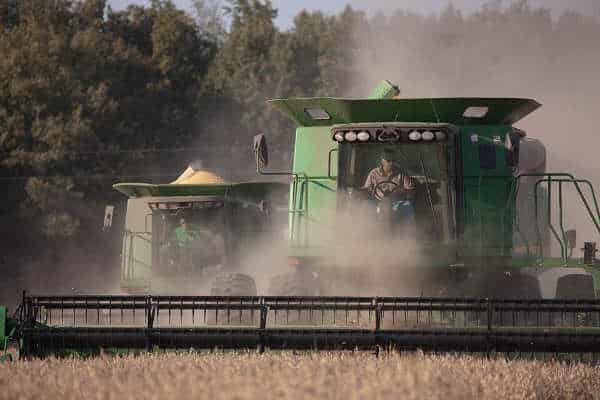
China’s Remarkable Example Of Foresight And Planning
It was late in 2024 that most soy farmers settled on their plans for this year. And what a year 2024 had been. It was one of the most highly profitable years for soybeans ever. And for the many farmers who had switched to the “beans” a decade before, they must have felt prescient. The demand for Soy in the States had continued to gradually strengthen, as many Americans sought out the healthy, vegetarian alternative to red meat.
But the big “kahuna” in the farmer’s plans was the demand from China. Year by year, Chinese appetite for American Soy continued to grow, reaching an astonishing $12.5 billion in 2024. This, even though American Soy is “Genetically Modified” (GMO), and considered fit for only livestock feed.
While the farmers were busy harvesting their very profitable soy crop, the rest of the nation was caught up in the closing days of a Presidential Campaign, with Democratic Candidate Kamala Harris pitted against Republican Donald Trump. It would come as no surprise to anyone who traveled through farm country that the former businessman, turned politician, easily carried the heartland and resumed his position behind the Resolute Desk.
For the Soy Farmers, this was a fitting topping to what had been an outstanding 2024. By the end of last year, planting schedules for this year were finalized, seed and fertilizer purchased, and long-term weather reports scanned. Farmers prepared a preliminary schedule for putting the crop in the ground. Almost all decided to continue what, for them, had been a winning hand: more Soy to plant.
When President Trump announced the new American Tariffs on April 2, 2025, planting of this year’s soy crop had already begun, and just like every other year, the farmer’s “die was cast.” No matter what lies ahead, foul weather, drought, storms, or even tariffs, the soy crop would grow to harvest, no turning back.
In the days that followed, it became increasingly apparent that President Trump’s chief aim was to cut ties with China. In that distinctive clipped way of his, he was out to break the trade ties with “CHI-na.” It came as a complete shock to the farm belt. Soy farmers in particular felt that they would be spared from this high-stakes tariff war, just as they had been in 2018. During Trump’s first term, he also engaged in a tariff war with China; however, at the time, the President excluded Soy from the Tariff schedule.
However, in what would be a foreshadowing of today, it was China that applied tariffs on American Soy – Beijing placed a 25% retaliatory tariff on all US soy entering China. The result was that American soybean sales to China dropped by two-thirds, and in the end, the US Congress had to bail out the farmers to the tune of $12 billion.
But China didn’t stop there. Trump had awakened our most significant soybean customer. It was then, seven years ago, in 2018, that China began to explore its alternatives. Clearly, Brazil, the world’s largest soybean producer, would be a viable alternative. But if, and only if, China and Brazil could come to terms and overcome the logistical hurdles.
Brazil, after all, is located in the South Atlantic, while China is on the far Pacific. Fortunately for China, it had secured rights and agreements to use the Panama Canal from the Panamanian authorities over 25 years ago. This made the current shipment of Brazilian Soy to China feasible.
However, China isn’t stopping there. Under its Global “Belt and Road” program, it has recently agreed to build a massive rail system from Brazil in the East to Peru in the West. It will further expedite Brazil’s shipping to China.
Long-term planning at its best.
During those heady, post-inauguration days, farmers believed that the halcyon days of 2024 would return for one more year. But that was not to be. China has apparently agreed to purchase Brazil’s Soy, not ours. So, when President Trump slapped a 34% tariff on American Soy exports to China, it was treated as a non-event by Beijing.
While American farmers twist in the wind, with acres and acres of unsold Soy, China is totally silent. And it’s this that is driving the Americans up the wall. No word, not a single social media “tweet,” or snide jab by President Xi Jinping, just an inscrutable silence.
And that’s how we know that we’ve lost the Tofu War. Our best Soy customer just selected another vendor, something that every shop owner and retail establishment has felt at some point or another. It’s a lesson that most of us learned early: when you think you’re indispensable, you’re not. For the customer, there are always alternatives.
Once again, our farmers get the raw end of the stick.
The article mentions that soy is a gmo. It is true that most soy grown in the US is a GMO and is used as animal feed and seed oil. Tofu is made with non-GMO soy and is organic.
A sad truth well told.
bring back memories of the Air Traffic controllers and so many families torn apart and ruined lives. Obviously, I had a few friends who got badly hurt.
Oh well…